One of the most beautiful coastal paths along the Mediterranean coast runs from Plage de Gigaro near Le Croix Valmer to Plage de l’Escalet. It is totally unspoilt, no buildings or modern facilities of any kind. For the most part It is a nature reservation, protected by “Conservatoire de littoral”.
The flora is unique and some of the plants are protected like the Pancratium maritimum (Sea Lily/Sea Daffodil)
Plage de Gigaro to Cap Lardier is 3.68 km; on the way you pass two small beaches, Plage Jovet and Plage Brouis (after 1.9 km).
From there it is only anther 900m to reach Cap Taillat.
From Cap Taillat to Plage de l’Escalet is another 1.96 km.
In total the walk is 8.78 km. and offers wonderful views of sea and coast with very interesting local flora. The following is some of the flora I came across in August:
Agave americana: Agave/Century plant, l’Agave d’Amerique
From Cap Taillat to Plage de l’Escalet is another 1.96 km.
The origin of the Agave americana is in North America (southern U.S.A , Mexico). It was probably the Portuguese and Spanish explorers who introduced the plant into Europe.

The flowers are edible and the stalks before flowering can be roasted, they are sweet, a lot like sugarcane. The sweet, tender core of the plant is cooked as a vegetable. In Mexico the s
sap is fermented to make the alcoholic drinks, Pulque and Vino Mescal.
The roots are used in soap manufacture and the coarse fibres are woven into ropes, twine and mats.
Medicinally the whole plant is used, leaves, roots and sap. It is a healing, anti-inflammatory, diuretic herb with hormonal and insecticidal constituents. It acts mainly on the digestive system and lowers fever by increasing perspiration. Fresh sap can cause skin irritation or dermatitis.

Family of the Agave americana is the Agave tequilana, which is used for the production of Tequila. From Agave rigida var. sisalana , sisal is made.
Arundo donax (Giant Cane/Giant Reed/Canne de Provence)
In many places near the coast you can see
it growing. It looks like Bamboo,
but it is in fact a reed belonging to the Grass Family, Gramineae or Poaceae. It likes damp spots and preferably
sandy soils, but with good drainage during the winter months.
New shoots start appearing around March,
from June – July the plant grows 10cm a day. It can grow up to 10m or more under the right
conditions. In September it
begins to flower, feathery plumes 40-60 cm long. Seeds start appearing in October. Strangely enough they are rarely fertile. The plant reproduces vegetatively, by
underground rhizomes that can penetrate the soil to 1m deep. In winter the plant stops growing.
What makes this plant so interesting is
that it has a multitude of uses and potential purposes. The stem material is strong and
flexible. It is the principal
source material for reeds for woodwind instruments such as oboe, bassoon,
clarinet and saxophone. Today
there are factories in the Var that produce these reeds, one of them is
situated in Cogolin. It has been
used over 5000 years for flutes.
Panpipes consist of ten or more reed pipes. They are used as wind and sun shelters, and supports for
climbing plants. The leaves
between 30-60 cm long are used in basket making and the Egyptians used to wrap
their dead in the leaves.
In the U.S.A. there are studies going on to
use it as a Biofuel to create electricity. What makes it so useful is that it gives a high yield, yet it
is low in maintenance. It survives
on low fertility soils, the only requirement is sufficient rain. As it is such a fast grower it can be
harvested a few times a year. It
has the potential to be used as a liquid fuel, for paper pulp and in the future
possibly even for plastics.
There is one problem and that has to do
with the invasiveness of Arundo donax.
As the seeds are virtually
infertile, there is not much danger of them causing problems, but the plants
might invade waterways. It
has been observed that planted along rivers, when a small piece of the rhizome with
a node breaks off, the plant has a tendency to start a new colony wherever it
lands.
The rhizome is used in Ayurvedic and
Homeopathic medicine. It contains
a substance called Bufotenin which is used in the manufacturing
of painkilling medicines. In
homeopathy it is used as a preventive medicine for allergies like hay fever.
Atriplex
halimus (Mediterranean Saltbush, Sea Orache,
Shrubby Orache)
A native to Europe, Middle East and northern
Africa.
It is a stout, evergreen, erect shrub, up
to 2.5m high, 3m wide with a grey peeling bark. The leaves are oval to diamond shaped, leathery, untoothed
to lobed and silvery/grey in colour.
The flowers are very small, pale yellow/green, flushed with red at the
end of the branches. The Saltbush
form hedges on the sandy and rocky seashores, sometimes inland in dry
places. It belongs to the Fat Hen Family, Chenopodiceae.
It can take severe drought and can grow in very alkaline and
saline soils. It is used to
de-salinate and reclaim soil.
It is very nutritious, high in protein, Vit C, A & D and
contains minerals such as Chromium.
The leaves can be eaten raw in salads, can
be dried, then ground and used as food flavouring.
The shrub is the dietary staple of the Sand
Rat. Sand Rats that live in a laboratory
environment are very prone to diabetes, but Sand Rats in the wild do not suffer
from diabetes. As the Sand Rat in
the wild feeds itself exclusively with the leaves of the Saltbush, studies are
underway to determine whether the Saltbush might be useful in the treatment of
Type 2 Diabetes.
Atriplex
littoralis (Grass-leaved Orache)
The Grass-leaved Orache grows to 70-80cm
high. It is found worldwide both
in temperate and warm regions. It
grows on or near the beach and in saline places inland. It flowers from July to September.
There are about 100 species of evergreen,
semi-evergreen, annuals, perennials and shrubs in the Genus. Oraches are mostly salt-tolerant and
are used in the reclaiming of saline soils. They belong to the Fat Hen Family, Chenopodiaceae.
Chamaerops humilis (Mediterranean Dwarf Palm/Dwarf Fan Palm/Palmier
nain)
The Chamerops is the only palm that is
native to the European continent, from southwest Europe (Spain, Portugal,
France, Italy and Malta) to northwest Africa (Marocco, Algeria and
Tunisia). There is a lovely
specimen on the coastal walk between Cap Taillat and the parking at l’Escalet.
It is a shrub-like
palm with several stems emerging from a single base. The trunk is covered in grey, whitish fibres. The leaves,
grey/green, fan-shaped, are born on long spine covered stalks. Two-third of the leaf is cut in up to
20 pointed, narrow lanceolate segments.
The flowers appear from April to May. The fruit is yellow or brown when ripe. The male and female Chamaerops are separate plants. They belong to the Palm Family, Palmae.
The Chamaerops
is pollinated by a weevil (Derelomus
chamaeropsis) and possibly the wind.
During the flowering
period, the leaves (not the flower) release a floral like chemical, which
attracts the weevil. The weevil
stays in the inflorescence and uses it as a shelter, for laying eggs and as
food. After the flowering period
the weevil leaves, leaving the eggs behind. The eggs turn into larvae and at the beginning of the next flowering
period, adult weevils emerge from the dry brittle stems of the old
inflorescence of the previous year.
It is always from the male plant.
If they lay their eggs in the female plant, the eggs and larvae get
destroyed as soon as seeds start to develop.
It is considered to be
one of the most important plants of the region as it has the ability to re-sprout
after fire preventing erosion and desertization.
The young growing tips
are eaten as a vegetable in some regions.
The leaves have been
used for matting, brooms and rope.
The fruits are not
edible, but used in traditional medicine as an astringent, because of its
bitterness and high tannin content.
Cistus
monspeliensis (Narrow-leaved Cistus/Ciste de
Monpellier) and Cistus salvifolius (Sage-leaved
Cistus/Ciste à feuilles de sauge)
The Cistus
is a genus of colourful evergreen shrubs typical for the Mediterranean
region. The plants have opposite
leaves and large showy flowers with rather crumpled petals. At the moment, with the summer
heat the flowers have dried up and the leaves look shrivelled, but with a bit
of rain they recover remarkably.
They belong to the Rockrose Family, Cistaceae.
Cistus
monspeliensis (Narrow-leaved Cistus)
A small Cistus,
up to 50cm in height. The leaves
have a hairy, glandular and sticky texture. They are un-stalked, green, wrinkly, narrow, linear to linear-lanceolate, 5cm long. From May to June it produces flowers, 5
white petals, 2-3cm across.
It has been introduced into California
where it is considered to be invasive.
Cistus
salvifolius (Sage-leaved Cistus)
This shrub is much taller than the Cistus monspeliensis. It grows up to 1m high, but often much
less. The leaves are oval to
elliptical, with a rounded or wedge-shaped base, 1-4cm long. They are short-stalked, 3-veined, rough
and hairy on both surfaces. The
flowers (May-June) are white with a yellow spot at the base, 3-5cm across. It is a favourite with bees.
Crithmum maritimum (Rock Samphire/Sea Fennel/Criste
marine/Perce-pierre)
Rock Samphire is an
edible wild plant found on the south and west coast of Britain and Ireland,
around the Mediterranean coast, western coast of Europe including the Canary
Islands and on the Black Sea.
A fleshy,
spreading perennial with branched,
ridged stems and glaucous leaves with rounded , linear-lanceolate
segments. The flowers are tiny,
yellow-green and are produced in umbels in summer. Height and spread 15-30cm. It belong to the Carrot Family, Umbelliferae.
It is the sole species
in the genus Crithmum and is found
among rocks and cliffs near the sea.
The name Crithmum comes from the Greek word for
barley ‘Krithe’, because the seed resembles barley seed and the word Samphire
comes from the French ‘sampière’,
shortened for ‘herbe de Saint Pierre’ (St Peter being a fisherman). In the 19th Century Rock
Samphire was shipped in casks of seawater from the Isle of Wight each May to
the markets in London.
The leaves are eaten
in salads, cooked in butter, or pickled.
It contains high
levels of Vit. C. It is an
aromatic, salty herb that has diuretic effects, cleanses toxins, and improves
digestion.
Daphne
gnidium (Flax leaved Daphne/Garou/Sain-Bois)
Native to the western Mediterranean.
An evergreen, erect shrub up to 2m, often
less. Leaves bluish-green, rather
leathery, oblong to linear, pointed.
Flowers from March to
September, creamy-white, born in dense terminal panicles. Berries deep red, becoming black
eventually. It belongs to the
Daphne Family, Thymelaeaceae.
Daphne
gnidium is poisonous. It contains Mezerin
and Daphne toxin. All parts are highly poisonous. It can cause dermatitis if sap touches
the skin.
Eurphorbia
paralias (Sea Spurge/Euphorbie du littoral)
A native to Europe, northern Africa and
western Asia.
It is an erect, hairless, fleshy, tufted
perennial up to 70cm tall. Sea
spurge grows on the beaches.
Leaves grey-green, numerous and overlapping, elliptical-ovate (ovate
towards the top of the stem, 5-22mm long.
Umbels with 3-6 rays. It
belongs to the Spurge Family, Euphorbiaceae.
The species is widely naturalized in
Australia where it invades coastal areas, displacing local species and colonizing
open sand areas favoured by certain nesting birds.
Glaucium flavum (Yellow Horned Poppy/Pavot cornu)
Native to northern
Africa, temperate zones western
Asia, the Caucasus and Europe.
It grows on or near
the seashore. The leaves are
thick, leathery, deeply segmented and bluish/grey in colour. They are coated in a layer of water
retaining wax. The flower is similar in structure to the
common poppy (Papaver rhoes) except
the sepals are not hairy. It is
summer flowering. The Yellow
Horned Poppy belongs to the Poppy family, Papaveraceae.
It has been introduced
into North America where it is considered a noxious weed.
All parts of the plant
are toxic, including the seeds and can produce symptoms of respitory failure
resulting in death.
Glaucine is the main
alkaloid in the Yellow Horned Poppy and works in a similar way to codeine. It has bronchodilator and anti-inflammatory
effects and is used in some countries to increase the airflow to the lungs and
as a cough suppressant. It may
produce side effects such as sedation, tiredness and hallucinogenic effects
characterised by colourful visual images.
Halocnemum
strobilaceum (Salicornia strobilaceum)
Native to the Mediterranean area.
This plant loves saline conditions, near
the seashore, salt marshes and margins of salt lakes. It is a short to medium fleshy sub-shrub, much
branched. Leaves are opposite, scale like, papery, fused
together round the stem.
The flowers are tiny, in groups of three borne in rounded or oblong
spikes, opposite or whorled. It
belongs to the Fat Hen Family, Chenopodiaceae.
Helicrysum
stoechas (Everlasting flower/Immortelle stoechas)
Native to the rocky shores of the
Mediterranean and the dunes of the Atlantic coast.
There are an estimated 600 species of Helicrysum worldwide. The Helicrysum stoechas flowers from
July-August and has both female and male organs on the same plant
(Hermaphrodite). Pollination is by
insects. They belong to the Daisy
Family, Compositae.
It is a small shrub, 50cm tall, rather
upright in growth. The leaves are
white-felted, linear and strongly aromatic when crushed. The flower heads are yellow, borne in
dense clusters, 1.5-3 cm across.
The flowers dry very well, hence the name
‘Everlasting’.
Is an obsolete medicinal herb, once used as
an expectorant. The flowers
have diuretic and vermifugal properties.
Juncus
acutus (Spiny rush/Sharp rush/Jonc aigu)
Native to Europe, Africa and North America
belonging to the Rush Family, Juncaceae. It is very common and grows in damp
places, on sandy seashores and inland.
It is a robust, densely tufted, tall
perennial, to 1.8m. The flowering
stems and stem-like leaves arise from the base of the plant at varying angles,
giving the whole plant a characteristic globe shape. The basal leaves very often exceed the dense rounded flower
head, ending in a sharp point. The
flowers are brown or reddish-brown.
The fruits are an ovoid, brown capsules.
It is seen as an invasive weed in
Australia.
As the plant grows on the beach, children
should be warned about the sharp pointed basal leaves.
Lavandula stoechas (French Lavender/Spanish Lavander/Lavande stéchas)
This lavender is very different from what we normally refer to as Lavender (Lavandula angustifolia). It grows from N.W. Africa eastwards, through Spain, France direction Balkans to the eastern Mediterranean.
At this time of the year the leaves and flowers are dried up,
but I feel it is such a typical plant for this area to be mentioned, and to show what it looks like in full bloom. The shrub can grow to 1m high, but most of the time it is much smaller. The leaves are 3-4cm long, greyish/green, linear to lanceolate, untoothed and hairy. The flowers are dark/ purple, produced on a spike. The spike is composed of a closely set of fertile bracts that house the corolas (actual flowers) and on top of the spike are two oblong bright lavender/ purple coloured tufts, the size of the tufts is quite variable. It belongs to the Mint Family, Labiatae.
but I feel it is such a typical plant for this area to be mentioned, and to show what it looks like in full bloom. The shrub can grow to 1m high, but most of the time it is much smaller. The leaves are 3-4cm long, greyish/green, linear to lanceolate, untoothed and hairy. The flowers are dark/ purple, produced on a spike. The spike is composed of a closely set of fertile bracts that house the corolas (actual flowers) and on top of the spike are two oblong bright lavender/ purple coloured tufts, the size of the tufts is quite variable. It belongs to the Mint Family, Labiatae.
Lavandula stoechas likes acid soil, the opposite from normal lavender, which likes alkaline soil. It is less winter hard than Lavandula angustifolia. It was the Romans, who used Lavandula stoechas in their bath waters and who named it ‘stoechas’ after the Îles de Stoechade, the old name for Îles d’Hyères.
In France and Spain in the old days the country people would make a simple extract of the oil of the plant by hanging the flowers downwards in a closed bottle in the sun. The oil was then used to dress wounds. The oil from Lavandula stoechas is distilled and used in the perfume industry. Its aroma resembles more Rosemary than ordinary Lavender and is used in airfreshners and insecticides.
It is used in southern Europe to alleviate nausea, externally as an insect repellant, an antiseptic and a relaxant.
Limonium pseudominutum (Sea Lavender/Le statice nain)
Limonium pseudominutem is found on the coast near Marseille, Îles de Hyères and along the coastal area of the Maures. Worldwide there are 150 species in the genus Limonium, annuals, bienniels, decidious and evergreen perennials, and subshrubs. They are found near the sea, salt marshes and deserts. They belong to the Thrift Family, Plumbaginacea.
Limonium pseudominutum has small leaves, very compact, shaped in the form of a small cushion. This shape limits its exposure to the effects of drying out winds, sun and spray. The flowers are pale violet in colour, 8-10mm across, borne in clusters. It is a salt loving plant. The leaves have glands that can expel excess salt.
The flower heads become papery in fruit and are used in flower arrangements.
Myrtis communis (Common Myrtle/Le myrte commun)
Native to southwestern Europe and the Mediterranean region. There are two species in the genus, Myrtus communis and Myrtus communis subsp. tarentina. The latter is a much smaller shrub.
It is an evergreen shrub or a small tree up to 5m tall. It makes a dense, wind-resistant hedge. Leaves are entire, 3-5cm in length, ovate to lanceolate in shape. When crushed they give off a juniper like smell. The fragrant star-like flowers have 5 petals and sepals and numerous golden stamens. Flowering time is from June-July. The petals are usually white. The fruit is a round berry, containing several seeds, most commonly blue-black in colour. The flowers are pollinated by insects and the seeds are dispersed by birds. It belongs to the Myrtle Family, Myrtaceae.
In ancient Greece Myrtle was sacred to Aphrodite, goddess of love and beauty. In the Mediterranean region Myrtle was symbolic of love and immortality. Even today in the Middle East, Myrtle is one of the flowers in a wedding bouquet.
On the islands of Sardinia and Corsica an aromatic liqueur called ‘Mirto’ is made from the berries by macerating them in alcohol.
Medicinally, the active compounds in Myrtis communis are rapidly absorbed and give off a violet-like scent to urine within 15 minutes. It is an aromatic, astringent herb that is antiseptic and an effective decongestant used internally for urinary infections and sinusitis.
Opuntia spp (Prickly Pear/Le figuier de Barbarie)
Native to the Americas. Introduced into Europe by the Spanish colonists on their return from the Americas. They now grow all over the Mediterranean region.
Prickly Pears have flat rounded pads (Cladodes). They are armed with two kinds of spines, large smooth fixed spines, and small hairy prickles called ‘glochids’. When a pad is touched, the ‘glochids’ detach themselves and penetrate the skin. They are very easy to propagate. Just insert a pad into the soil and a new Prickly Pear has been established. They belong to the Cucumber Family, Cucurbitaceae.
Prickly Pears were introduced in Australia where they almost caused an environmental disaster. It started with the introduction in 1788 of Prickly Pears from Brazil into Sydney, 50 years later the plants were brought to a farmer’s garden. His wife gave out cuttings to friends and that was the start of the invasion. The idea behind introducing the Prickly Pear into Australia was the thought that they would form natural, agricultural fencing and an attempt to establish a cochineal industry. This plant became so invasive that it transformed 260,000 km2 of farming land into an impenetrable jungle of Prickly Pears, in places 6,1m high. It was referred to as ‘the green hell’. In 1919 the Federal Government established the ‘Commenwealth Prickly Pear Board’ to eradicate the plant. They first tried mechanical removal and poisonous chemicals, both failed. As a last resort, in 1925, they introduced a moth ‘Cactoblastis cactorum’ from S. America. The food of the larvae of this moth's is the Prickly Pear. It was so successful that it almost wiped out the existing Prickly Pear population in Australia.
The ‘Dactylopius coccus’, a scale insect, feeds itself on the moisture and nutrients of the sap of the Prickly Pear. The insect produces carminic acid. This carminic acid is extracted from the insect’s body and eggs to make the red dye ‘cochineal’. Cochineal is used in red food colouring and cosmetics. It was widely used by the Aztec and Maya people. Produced almost exclusively in Oaxaca, Mexico, cochineal became Mexico’s second most important export after silver. Cochineal was consumed throughout Europe and was so highly valued that its price was often quoted on the London and Amsterdam Commodity Exchanges.
Nowadays the highest production of cochineal is in Peru, Canary Islands and Chile.
Cactus fruit, the fruit from the Prickly Pear is eaten around the Mediterranean. It has to be peeled carefully to remove the spines and hairy prickles on the outer skin.
Pancratium maritimum (Sea Lily/Sea Daffodil/Le lis de mer)
The Sea Lily is a native to the Mediterranean region, S.W Europe and the Black Sea area.
It is a bulbous perennial, deep rooted, which protects it from the shifting sands. The leaves are glaucous, broadly linear, evergreen, but in very hot summers they may die back. Height 40cm. Flowers are 15cm long, in umbels of 3-15. It flowers from August-October. The flower has a nice smell, a bit like a lily smell, only detectable on summer nights. It grows on the beach and likes to be in direct sunlight. It needs a hot summer to induce flowering. It belongs to the Daffodil Family, Amaryllidaceae.
The Sea Lily is pollinated by a hawkmoth (Agrius convolvuli). It only visits the flower when there is no, or little wind. The numerous black seeds get scattered all along the beach.
As it is relatively rare, it is a protected plant. You can admire it in a fenced off area near Cap Taillat.
Pistachia lentiscus
(Mastic Tree/Pistachier lentisque)
The Mastic Tree is native to the Mediterranean basin. In the Var, on the coastal walk, it is a common tree. It hugs the seaward side of the walk, very dense, like a windbreak. The Mastic Tree is a small (max. 2-3m) evergreen tree with deep green pinnate leaves without an end leaflet. The flowers grow in dense spikes, the male flowers with dark red anthers, the female ones are greenish in colour. The fruit is red, ripening to a shiny black colour. When you crush the leaves of the Mastic Tree, it gives off a strong resin smell. It belongs to the Pistacio family, Anacardiaceae.
In the eastern
Mediterranean, on the Greek island of Chios,
the collection of the resin from the Mastic tree has developed into an
industry. In July the ground
underneath the Mastic tree is levelled, swept and then covered with a layer of
white soil, pressed down hard to make it smooth. Incisions are made in the tree trunk twice a week over
a period of 5-6 weeks. The Gum
Mastic Resin starts to seep from the incisions and falls on the white sand. It takes 10-20 days for the resin to
harden, after this period it is ready to be collected.
Gum mastic is used in
curing peptic ulcers, in the fabrication of confectionary, notably Turkish Delight, and in the locally well
known aperitif Masticha.
Rubus sanctus/Rubus ulmifolius (Holy Thorn Bush/Bramble/Ronce à feuilles d’orme)
Native to southern, central and western Europe.
Very variable, thicket-forming, semi-evergreen shrub with arching or scrambling stems, armed with stout prickles, hairy or not hairy. Leaves pedate (foot-like) with 3-5 elliptical to ovate, toothed leaflets, dark green above but whitish hairy beneath. Flowers pink or white, 2-3cm, borne in large prickly panicles. Where it grows, indicates the presence of water. It belongs to the Rose Family, Rosaseae.
The fruits are eaten fresh or used in jam, tarts and wine. It offers shelter for animals and helps against erosion.
Medicinally, a decoction of the roots, is used as a herbal tea to alleviate pain and used in the treatment of rheumatism.
Salsola kali (Prickly saltwort/Soude brulée)
Native to the coastal regions of Europe from the Baltic, North Sea, Atlantique Ocean to the Mediterranean Sea.
Very variable erect to sprawling, short to medium succulent annual. Leaves cylindrical with a short spine-tip, untoothed. Flowers small, green or sometimes pink-tinged, solitary in the axils of spine-tipped bracts. Sandy or rocky seashores, dunes and sandy fields. It belongs to the Fat Hen Family, Chenopodiaceae.
Before the early 19th century the Prickly saltwort and other saltwort species were an important source of soda ash. Prickly saltwort contains as much as 30% sodium carbonate and was one of the materials essential in the making of glass, soap and many other commodities. From the 19th Century onwards synthetic soda is used.
Scolymus hispanicus (Common Golden Thistle/Spanish Oyster Thistle/Scolyme d’Espagne)
Native the southern and western Europe.
Biennial or short lived perennial growing to 80cm tall with a spiny stem and leaves. Flower-heads are bright yellow to orange-yellow 2-3 cm in diameter, borne in a narrow panicle. It flowers from May-September. It belongs to the Daisy Family, Compositae.
Since ancient Greece, the plant has been used for culinary and medicinal purposes. It is very popular in Spain, where the sweet tasting roots and leaves are added to salads, soups and stews and used in scrambled eggs. It’s yellow flowers are a substitute for saffron.
It has diuretic effects and aids the digestion.
Senecio bicolor/Jacobaea maritima (Silver Ragwort/Cineraria/Senéçon cendre)
It is a heat and drought tolerant evergreen sub-shrub, 0.5-1m tall, densely branches with leaves, oval to lanceolate, toothed to pinnately-lobed. The leaves and stems are covered with grey-white to white hairs. The flowers are daisy-like, 12-15mm in diameter, yellow, borne in dense terminal clusters; rays. It flowers from May-August. It belongs to the Daisy Family, Compositae.
Used in horticulture in northern Europe, where it is grown as an annual for its silver coloured
foliage.
The following is for my friend, Michèle, who whilst we were walking the coastal path remembered her Swiss grandmother picking Senecio:
Senecio vulgaris (Groundsel) and other related Senecio have a calming influence on the uterus; they encourage menstruation, and at the same time relieve menstrual pain. Excessive use causes liver damage. It is no longer thought safe for internal use.
Senecio jacobaea (ragwort/tansy ragwort) is used externally to relieve arthritis, rheumatism, muscular pain and sciatica).
foliage.
The following is for my friend, Michèle, who whilst we were walking the coastal path remembered her Swiss grandmother picking Senecio:
Senecio vulgaris (Groundsel) and other related Senecio have a calming influence on the uterus; they encourage menstruation, and at the same time relieve menstrual pain. Excessive use causes liver damage. It is no longer thought safe for internal use.
Senecio jacobaea (ragwort/tansy ragwort) is used externally to relieve arthritis, rheumatism, muscular pain and sciatica).
Bibliography:
RHS Encyclopedia of Herbs by Deni Bown
Mediterranean Wild Flowers by Marjorie Blamey and Christopher Grey-Wilson
80 fleurs des îles et du littoral varois by Libris
Web:
Wikipedia
Photos: Web and Saskia



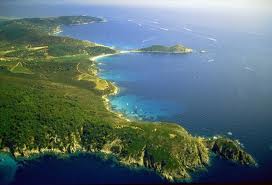










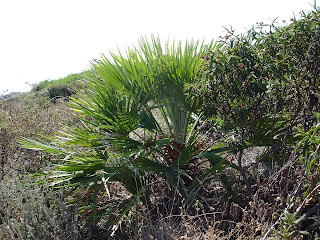

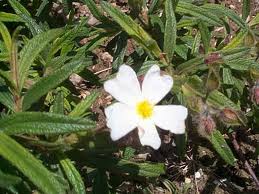















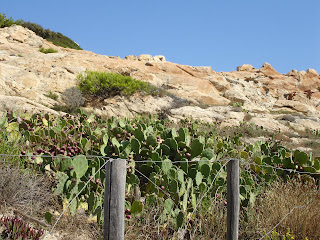


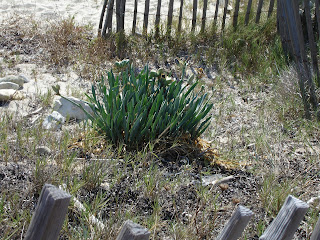











Beau travail !!!
ReplyDeleteFélicitations et à bientôt.
Elisabeth